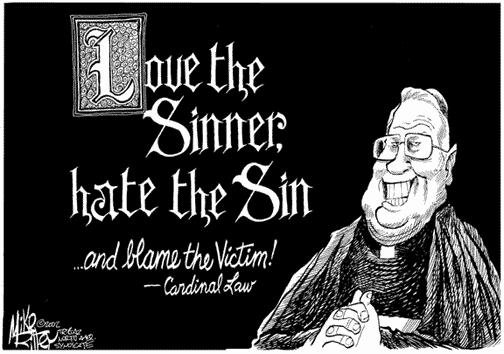‘I never used that word ‘dumped’,” Catherine Corless, a local historian in Co Galway, tells The Irish Times. “I never said to anyone that 800 bodies were dumped in a septic tank. That did not come from me at any point. They are not my words.”
The story that emerged from her work was reported this week in dramatic headlines around the world.
“Tell us the truth about the children dumped in Galway’s mass graves” – TheGuardian.
“Bodies of 800 babies, long-dead, found in septic tank at former Irish home for unwed mothers” – The Washington Post.
“Nearly 800 dead babies found in septic tank in Ireland” – Al Jazeera.
“800 skeletons of babies found inside tank at former Irish home for unwed mothers” – New York Daily News.
“Almost 800 ‘forgotten’ Irish children dumped in septic tank mass grave at Catholic home” – ABC News, Australia.
 Corless, who lives outside Tuam, has been working for
several years on records associated with the former St Mary’s
mother-and-baby home in the town. Her research has revealed that 796
children, most of them infants, died between 1925 and 1961, the 36 years
that the home, run by Bon Secours, existed.
Corless, who lives outside Tuam, has been working for
several years on records associated with the former St Mary’s
mother-and-baby home in the town. Her research has revealed that 796
children, most of them infants, died between 1925 and 1961, the 36 years
that the home, run by Bon Secours, existed.
 Corless, who lives outside Tuam, has been working for
several years on records associated with the former St Mary’s
mother-and-baby home in the town. Her research has revealed that 796
children, most of them infants, died between 1925 and 1961, the 36 years
that the home, run by Bon Secours, existed.
Corless, who lives outside Tuam, has been working for
several years on records associated with the former St Mary’s
mother-and-baby home in the town. Her research has revealed that 796
children, most of them infants, died between 1925 and 1961, the 36 years
that the home, run by Bon Secours, existed.
Between
2011 and 2013 Corless paid €4 each time to get the children’s publicly
available death certificates. She says the total cost was €3,184. “If I
didn’t do it, nobody else would have done it. I had them all by last
September.”
The children’s names, ages, places of
birth and causes of death were recorded. The average number of deaths
over the 36-year period was just over 22 a year. The information
recorded on these State- issued certificates has been seen by The Irish Times;
the children are marked as having died variously of tuberculosis,
convulsions, measles, whooping cough, influenza, bronchitis and
meningitis, among other illnesses.
The deaths of
these 796 children are not in doubt. Their numbers are a stark
reflection of a period in Ireland when infant mortality in general was
very much higher than today, particularly in institutions, where
infection spread rapidly. At times during those 36 years the Tuam home
housed more than 200 children and 100 mothers, plus those who worked
there, according to records Corless has found.
What
has upset, confused and dismayed her in recent days is the speculative
nature of much of the reporting around the story, particularly about
what happened to the children after they died. “I never used that word
‘dumped’,” she says again, with distress. “I just wanted those children
to be remembered and for their names to go up on a plaque. That was why I
did this project, and now it has taken [on] a life of its own.”
In 2012 Corless published an article entitled “The Home” in the annual Journal of the Old Tuam Society.
By then she had discovered that the 796 children had died while at St
Mary’s, although she did not yet have all of their death certificates.
She
also discovered that there were no burial records for the children and
that they had not been interred in any of the local public cemeteries.
In her article she concludes that many of the children were buried in an
unofficial graveyard at the rear of the former home. This small grassy
space has been attended for decades by local people, who have planted
roses and other flowers there, and put up a grotto in one corner.
In light of Corless’s article a Children’s Home
Graveyard committee was established last year. In recent months its
secretary, Teresa Killeen Kelly, addressed the congregation after Mass
at Tuam Cathedral, explaining the work of the committee and asking for
donations towards a plaque. Copies of Corless’s article were handed out.
As
John Lowe, another member of the committee, explained this week at the
site of the former home, the group’s aim is to raise €15,000 for a
plaque with all the names of the children on it. So far they have raised
€7,000, and €2,000 has been paid for initial drawings of the plaque.
In
1840 a workhouse was built on a site off what is now Dublin Road. When
the workhouse closed, the building was taken over, and from 1925 until
1961 it was used as the mother-and-baby home. After that it lay derelict
for several years, until it was demolished and a new housing estate and
playground built in its place. In the years that it was falling into
disrepair, the large building and surrounding land became a natural
magnet for curious local children.
orless writes in her article about hearing of boys
who “came upon a sort of crypt in the ground, and on peering in they saw
several small skulls. I’m told they ran for their lives and relayed
their find to their parents.”
On St Patrick’s Day
this year Barry Sweeney was drinking in Brownes bar, on the Square in
Tuam. He fell into conversation with someone who was familiar with
Corless’s research, and who repeated the story of boys finding bones. “I
told her that I was one of those boys,” Sweeney tells The Irish Times in his home, on the outskirts of Tuam. “I got a phonecall from Catherine a couple of weeks later.”
Sweeney
was 10 in 1975, and the friend he was with on that day, Frannie
Hopkins, was 12. They dropped down from the two-and-a-half-metre
boundary wall as usual, into the part of the former grounds that Corless
and local people believe is the unofficial burial place for those who
died in the home. “We used to be in there playing regular. There was
always this slab of concrete there,” he says.
In
his kitchen, Sweeney demonstrates the size of this concrete flag as he
recalls it: it’s an area a little bigger than his coffee table, about
120cm long and 60cm wide. He says he does not recall seeing any other
similar flags in their many visits to the area.
Between
them the boys levered up the slab. “There were skeletons thrown in
there. They were all this way and that way. They weren’t wrapped in
anything, and there were no coffins,” he says. “But there was no way
there were 800 skeletons down that hole. Nothing like that number. I
don’t know where the papers got that.” How many skeletons does he
believe there were? “About 20.”
When Corless was
researching the home she looked at old maps of Tuam. One was an 1840
Ordnance Survey map that shows the then workhouse. At the rear of the
site is a space she believes to be the sewage tank for the workhouse,
although it is not labelled as such. Later maps have “sewage tank”
written in the same space.
But there is confusion about what dates these maps relate to. One map Corless shows The Irish Times
is dated 1892. It describes the building on the site as “Children’s
Home”, but in 1892 the building was a workhouse. It did not become a
home until 1925. Corless had not noticed this until her attention was
drawn to it.
She is sure that a sewage tank
operated on the site in the early part of the 20th century because
minutes of the workhouse’s board meetings published at the time by the Tuam Herald report problems of overflowing.
Would
it have taken up the entire space of what is now known as the
unofficial graveyard for the babies who died at the home? “No,” she
says. “Maybe a third of the area.” She believes that what Sweeney and
Hopkins found was the former sewage tank, which she had previously
referred to in her article as a crypt. It seems this is where the story
of “800 skeletons dumped in a septic tank” has subsequently come from.
Corless has not been contacted by anyone from any
State department, asking to have access to her research. Nor has her
work been corroborated by anyone else. “I would definitely be willing to
share my research,” she says.
In response to Corless’s story, Minister for Children Charlie Flanagan confirmed this week that there will be a Government inquiry into all mother-and-baby homes.
Corless
has proved that 796 children died while at St Mary’s in Tuam – a
shameful statistic that would not have been known without her years of
dedicated work. It seems clear that at least some of these children lie
in the small plot of land at the back of the Dublin Road housing estate.
Excavation might be the only way to be sure. “Our intention in setting
up this committee was not excavation,” she says, “but I would welcome
the truth.”























Geen opmerkingen:
Een reactie posten